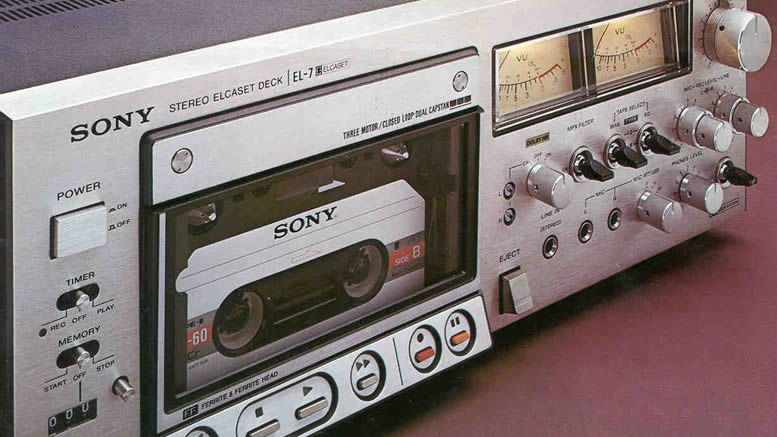 The Elcaset (an abbreviation of L-cassette or large cassette) was a short-lived audio format created by Sony in 1976. At that time, it was widely felt that the compact cassette was never likely to be capable of the same levels of performance that was available from reel-to-reel systems, yet clearly the cassette had great advantages in terms of convenience.
The Elcaset (an abbreviation of L-cassette or large cassette) was a short-lived audio format created by Sony in 1976. At that time, it was widely felt that the compact cassette was never likely to be capable of the same levels of performance that was available from reel-to-reel systems, yet clearly the cassette had great advantages in terms of convenience.
While the cassette case itself looked very similar to a standard compact cassette, it was over twice the size in order to fit in the wider and faster moving tape. Inside the cassette was a quarter-inch tape running at 9,53 cm/s (3.75 inches per second). Sony’s marketing department at the time were quick to point out the similarities to reel to reel tape and the elcaset’s performance, quoting figures of 0,4% wow and flutter, a signal to noise ratio of 62dB and a frequency response of 25 to 22kHz.
Apart from the larger cassette size, the main difference from compact cassettes on their high end EL-7 model was what Sony called their “closed loop dual capstan tape drive system”. On either side of the heads was a capstan and a pinch roller that Sony claimed would maintain constant tape to head pressure as opposed to compact cassette’s single capstan system. Their lower end models only came with a single capstan and 2 heads instead of 3, despite this performance figures were still much greater than Compact Cassette. On all models the tape was Withdrawn from the cassette, in the much the same way a VHS player does. This is done to avoid the manufacturing tolerances of the cassette shell and therefore improve sound quality. The Elcasete also featured fast que and review letting the user skip to the next song very quickly, it did this by placing a separate track on the tape to place markers that the system could detect and stop at.
While the system was technically excellent it was a commercial failure, despite some interest from audiophiles, low sales was not enough to keep production going. Many people blame the bulky cassettes, cost, bad timing or the improving quality of compact cassettes that had already became a popular standard in the home and even in the car by this time. So for most people, the quality of compact cassettes was adequate, and the benefits of the expensive Elcaset system very limited.
Other manufactures like Panasonic, JVC and Teac produced their own version of the Elcaset deck under licence from Sony but they too found sales of the Elcaset deck were doomed. The Elcaset system was abandoned in 1980, when Sony liquidated all their stock via auction. All the remaining systems were bought by a discount electrical company in Finland. Many audiophiles in Finland snapped up the remaining units at bargain prices. Three Elcaset models were produced by Sony across its short lifespan the El-7 (pictured above), EL-5 and a portable recorder similar to what radio reporters would use at the time known as the EL-D8.
The Elcaset is another in the long line of formats that were a good idea at the time. If development of the Elcaset started a few years before its release date of 1976, the need for a better cassette standard would of been great, but by 1976 The Compact Cassette had improved dramatically to an acceptable standard for the average user. In contrast the first demonstration of a digital audio disc was in 1977, the first prototype CD was shown in 1979 and eventually released in Europe and Japan in 1982. Many audiophiles may of been holding off for the CD player to hit the shelves.
